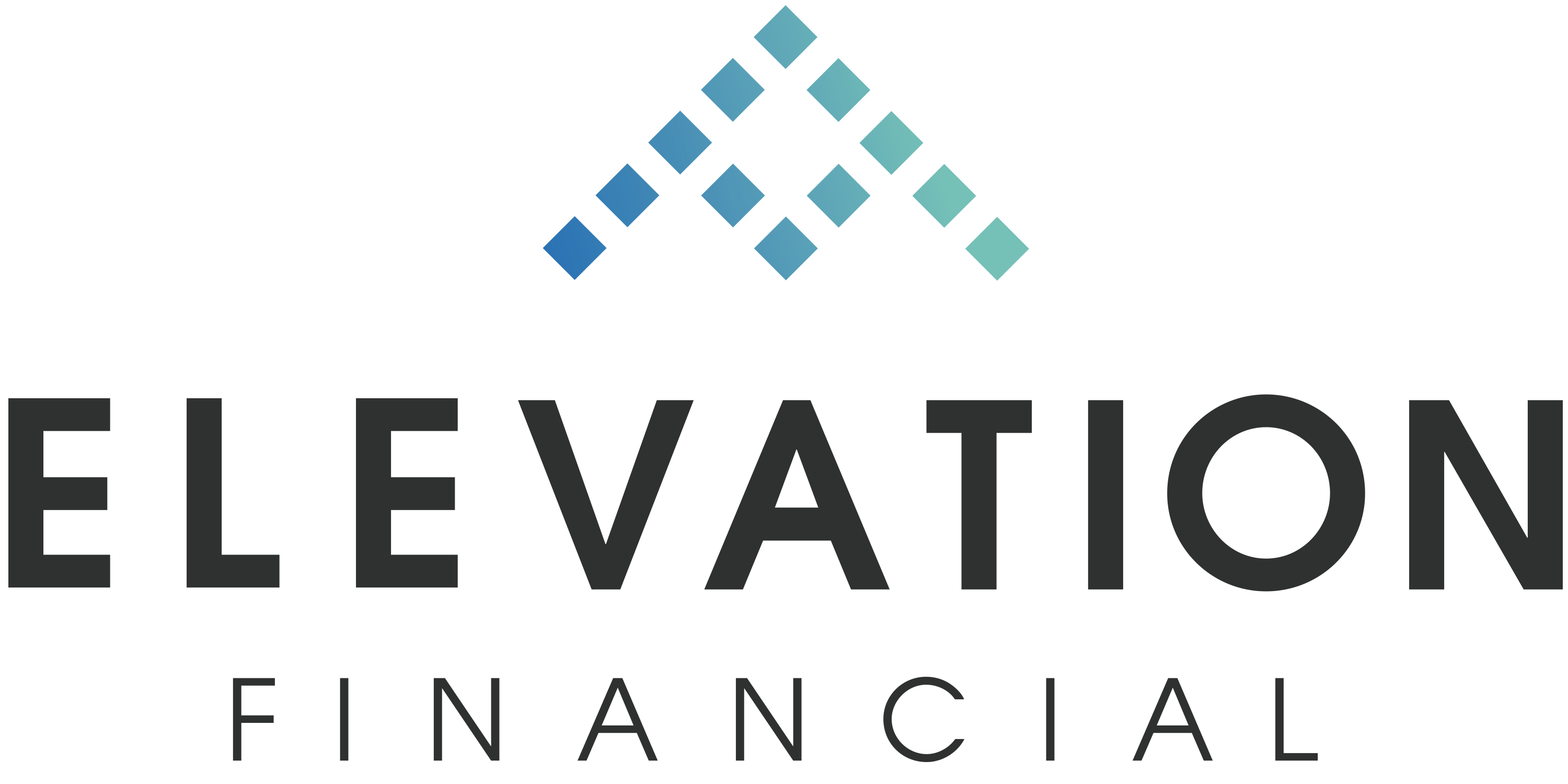
Share this Post
Subscribe

Need help with your money or investments? Book a consultation to learn more about working together.
The Right Way to Set Up (and Use) YNAB for Budgeting
[Prefer to listen? You can find a podcast version of this article here: E236: The Right Way to Set Up (and Use) YNAB for Budgeting]
Budgeting is a bit controversial for some. Many individuals feel that it is restrictive, a waste of time, or unnecessary.
Others swear by it. I happen to be one of those people.
In my experience, budgeting is a powerful way to unlock your full potential for building wealth.
There are many ways to budget, but my preferred tool is You Need a Budget (YNAB). It's a very robust app that helps you track your cash flow and be intentional about your money.
I coach many of my clients on how to use YNAB and how to configure it for maximum success.
What I’m about to share is my way of using YNAB. I’ve used it for years, personally and with my clients, and it’s worked wonders. But hey, if you’ve got a different way that works for you, that’s fine. There’s no one-size-fits-all here—just a system that’s worked for me and the folks I work with.
Alright, let’s get into it.
Why YNAB?
First things first—why YNAB? YNAB stands for You Need A Budget if you've never used it. It’s software that helps you manage your money in an intentional and flexible way. The big idea behind YNAB is giving every dollar a job. It’s not just about tracking your spending—it’s about planning it. I’ve been a certified YNAB coach for a while now, and I can’t recommend it enough.
Now, I know there are a lot of budgeting tools out there, and they all have their merits. But I’m partial to YNAB because it’s more than just software—it’s a system. A system that helps you take control of your money, reduce financial stress, and reach your goals.
Plus, it’s pretty fun to use once you get the hang of it.
Step 1: Setting Up Your Bank Accounts
Let’s start with the basics—your bank accounts. How you set these up can make or break your budgeting experience. Here’s the structure I recommend:
Operating Account (Checking)
This is your main account—the heart of your financial life. All your income goes here, and all your day-to-day expenses come out of here.
I like to keep this account at a brick-and-mortar bank. Why? Because sometimes it’s nice to be able to walk into a bank if you need to. Plus, it gives you a local place to park your money.
Just be sure your local bank has decent technology and syncs up reliably to YNAB. If your bank has poor tech, this is a good reason to switch banks (in my opinion).
Short-Term Savings Account
Now, this is where things get interesting. Your short-term savings account is for your emergency fund and any big expenses coming up in the near future.
But here’s the trick—I like to keep this account at a different bank. Preferably an online bank that offers a high interest rate. This way, it’s not too easy to dip into your savings on a whim. You’ve got a little friction there, which is a good thing.
Travel and Vacation Account
Vacations can totally blow up your budget if you’re not careful. That’s why I recommend having a separate travel account.
This should be at yet another bank, and ideally, it comes with a debit card so you can spend directly from this account when you’re on vacation.
The idea is to keep your travel funds separate from everything else so you can enjoy your trips without worrying about how they will impact your regular budget.
Tax Account (For Business Owners)
If you’re a business owner, this one’s for you. You need an account specifically for taxes.
This is where you’ll stash money for your quarterly estimated tax payments. Keeping this money separate ensures that you’re not scrambling to pull together the funds when tax time rolls around.
By setting up your accounts this way, you’re building intentional barriers between different types of spending. This helps you stay organized and reduces the temptation to borrow from your savings for everyday expenses.
Many business owners like to pay their quarterly estimated taxes from their business account, but this is technically not the best practice. As a pass-through entity (like an LLC or S-corp), you should ideally pay your taxes from your personal account since you are the one being taxed, not your business.
Step 2: Linking Your Accounts in YNAB
With your accounts set up, let’s link them to YNAB. Here’s how I like to do it:
Linking Budget Accounts
First, link your operating checking account. This is where all the action happens, so it’s crucial to keep it connected. If you use credit cards and pay them off in full each month, link them, too. This keeps your budget up to date with every swipe.
Note: be sure to only use one checking account for your budget. I've seen cases where individuals or couples will sometimes use two or more accounts as their operating accounts and it gets very messy. It will technically work in YNAB, but it can throw the balances and transactions out of whack because of transfer delays, and there's no reason for it.
Adding Tracking Accounts
For your short-term savings, travel and vacation, and tax accounts, add these as tracking accounts in YNAB. These accounts won’t interact with your budget directly—they’re just there so you can keep an eye on the balances. This setup keeps your budget focused on day-to-day cash flow while still letting you monitor your progress toward those big goals.
As you allocate money to build up your savings or plan a vacation, you simply transfer money into these accounts and classify it as a budget item in YNAB. For example, if you transfer $300/month into your Travel & Vacation account every month, you will have a budget item called "Travel & Vacation" and assign $300 to it, just like any other expense.
If you’re working on paying off a credit card balance, add it as a tracking account. This keeps your budget clean and lets you focus on reducing the balance without mixing in new charges.
Step 3: Setting Up Your Budget Categories
Now comes the fun part—setting up your budget categories. This is where you get to decide where your money will go. Here’s how I like to structure things:
Life Goals
- This category is all about the big picture. These are your goals, the things that really matter to you. Here’s what I typically include:
- Emergency Fund Contributions: Building that safety net.
- Retirement Savings: Putting money into IRAs or 401(k)s.
- Travel and Vacation Savings: Saving up for that dream trip.
- Charitable Giving: If giving back is important to you, make space for it here.
- Education Savings: Maybe you’re saving for your kids’ college funds.
These are the big, important items that you want to prioritize.
Household Operations
This is your bread and butter—your everyday expenses that keep your household running. Think of it as your “must-haves”:
- Mortgage or Rent: Gotta have a place to live.
- Utilities: Keeping the lights on, water running, internet flowing—you get the idea.
- Groceries and Household Supplies: The stuff you need to get through the week.
- Transportation: Gas, car maintenance, bus fare—however you get around.
- Insurance: Health, auto, home—you name it.
Keeping these expenses separate from discretionary spending helps you see at a glance what it really takes to keep your household running.
Discretionary Spending
Here’s where you have a little fun. This category covers all the extras—the things that make life enjoyable but aren’t strictly necessary:
- Dining Out: Your favorite restaurants, coffee shops, takeout.
- Entertainment: Movies, concerts, streaming services.
- Clothing and Accessories: Keeping your wardrobe fresh.
- Fitness and Wellness: Gym memberships, yoga classes, that sort of thing.
This is where you have the most flexibility to adjust your spending, depending on what’s going on in your life.
These are just suggestions. For a complete template you can use as a starting point, refer to my article: How to Set Up a Household Budget – A Template for Categories and Groups.
Step 4: Categorizing Transactions
Now that your categories are set up, it’s time to start categorizing transactions. This is where the magic happens in YNAB—where you begin to see exactly where your money is going.
- Mortgage Payment: Categorize under "Mortgage" in Household Operations.
- Groceries: Goes under "Groceries and Household Supplies."
- Dining Out: That’s a Discretionary Spending item.
At first, you’re probably going to be guessing a little bit—especially if you’re new to budgeting. But don’t worry, you’ll get the hang of it. Over time, you’ll start to see patterns in your spending, and you can tweak your budget to match reality.
Step 5: Keeping Your Budget Up to Date
Here’s the deal—setting up your budget is only the beginning. To really make it work, you’ve got to keep it up to date. Here’s how I do it:
Daily/Every Other Day Check-ins
One of the biggest mistakes I see people make is setting up their budget and then forgetting about it. Don’t let that be you! I recommend checking in with YNAB every couple of days. Just open the app, review your transactions, and categorize them. It only takes a few minutes, and it keeps your budget from getting out of control.
Manual Entry of Transactions
This might sound a little high-maintenance, but hear me out. When I make a purchase, I like to manually enter the transaction into YNAB right then and there.
This keeps my budget up to date in real time and helps me stay on track. When the transaction flows in from the bank later, YNAB matches it up with what I entered.
Weekly Reconciliation
Every Friday, I reconcile my accounts. This is just a fancy way of saying I make sure YNAB’s balances match my bank’s balances.
If they don’t match, YNAB will help me figure out what’s off and fix it. This keeps my budget accurate and helps me catch any mistakes early.
Step 6: Handling Glitches and Reconciliation Issues
Look, no system is perfect, and sometimes things get a little wonky. Maybe a transaction didn’t come through, or your bank balance doesn’t match what YNAB says. Don’t panic! If something’s off, YNAB will prompt you to create a journal entry to fix it. It’s not the end of the world—just a small bump in the road.
And sometimes, bank feeds glitch out. If that happens, just reconnect your account and keep moving forward.
The important thing is to stay on top of it and not let little glitches derail your progress.
Step 7: Adapting YNAB to Your Financial Life
Everyone’s financial situation is different, and YNAB is flexible enough to handle that. Whether you’re single, married, or somewhere in between, there’s a setup that will work for you.
Combined Finances
If you and your partner share finances, great! You can set up a joint budget in YNAB and manage everything together.
Separate Finances
If you prefer to keep your money separate, that’s fine, too. You can each have your own YNAB budget and manage your finances independently.
Hybrid Approach
Some couples like to do a mix of both. Maybe you have a joint budget for household expenses and separate budgets for personal spending. Whatever works for you!
Final Thoughts
There you have it—my guide to setting up and using YNAB the "right" way. It might seem like a lot at first, but trust me, once you get into the groove, it’s a game-changer.
You’ll go from wondering where all your money went to knowing exactly where it’s going—and that’s a great feeling.

